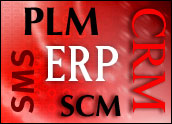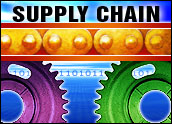
Shoshana Zuboff is a genius, but don’t just take my word for it.
Zuboff is a Harvard Business School professor who recently wrote a book called The Support Economy with her husband and collaborator, James Maxmin. What makes Zuboff a genius is that although I think the book is about CRM, there is only one paragraph specifically referring to CRM in more than 380 pages. That’s sort of like drawing a circle using only straight lines. And the solitary paragraph? It says CRM is a failure.
To be scrupulously rigorous, it’s not that CRM has failed per se (I personally think it’s done a lot of good), but rather that the underlying drivers of CRM have failed. According to Zuboff, who did most of the writing of the book, these faulty drivers are rooted in the early 20th century’s conversion of the agrarian economy into an industrial one — not your garden-variety, Soviet-style, “let’s build a lot of big tractors” industrial economy, but the mass production-mass consumption economy we and our credit cards know and love.
In such an environment, Zuboff contends, the prevailing “enterprise logic” is all about achieving large production runs that keep unit costs low, resulting in lots of affordable, standardized products. The task for sales and marketing then becomes all about answering the question, “How do we get them to buy what we made?” rather than asking, “What do they want to buy?” Meanwhile, service becomes about spending as little money as possible “handling” complaints. Zuboff says you can trace this enterprise logic all the way back to Henry Ford’s famous dictum that Model T customers could “have any color they want, as long as it’s black.”
Today’s Consumer
For the most part, today’s CRM is built to support this enterprise logic and is part of a long line of efforts by corporations to “rediscover the customer,” including the quality movement, the 1950s concept of marketing, and reengineering. Somehow, these efforts, though flawed, have always been enough to enable mass production to drive ever-higher levels of mass consumption — at least until now, according to Zuboff.
What’s different today is the consumer. Today’s consumer is better educated, wealthier and taught from an early age to consider him- or herself as a unique individual with discrete needs. There is a Mars-and-Venus aspect to the vendor-customer relationship, too. The spending power of today’s consumer is predominantly controlled by women (that’s not new) — the CFOs of most families — yet most product decisions are made by men. And one last thing: Today’s consumer is a bit starved for time.
Put all this together, and you quickly discover that software designed to help us “sell what we made” or “service what we sold” is a nonstarter.
Enterprise Logic in Action
If The Support Economy were simply a compendium of assertions, it might be dismissed as so much feminist ranting, but the book is meticulously researched. If it has a flaw, it might be that it is too overflowing with statistics and facts culled from the real world.
For example, in one subsection playfully titled, “If Boys Liked Girls Better, Would They Be Richer?” Zuboff quotes a Wall Street Journal article about the furniture industry. Ever wonder why there are so many lousy ads for furniture on TV? You know the ones I mean. They usually consist of the CEO of a five-store chain and his wife looking right into the camera and telling you about some truckload of no-name living rooms that they have to move “at fantastic savings!”
According to Zuboff, “Success in the [furniture] industry depends on predicting the colors and styles that will appeal to female consumers … who make 80 percent of the furniture buying decisions.” This fact notwithstanding, women are almost totally absent from the executive ranks in the furniture industry. Incorrect decisions about color and style result in brimming warehouses that, in turn, result in those terrible ads.
But my favorite story from the book is about The Limited, a women’s sportswear chain. The Limited lost a cool US$90 million in 1999, and then the executives decided to get tough with a program called “winning at retail” (WAR, in sportswear?!). WAR failed to ignite sales despite a lot of tough talk and aggressive posturing. According to Zuboff, “…analysts blamed The Limited’s troubles on large, impersonal, outdated stores and products that were no longer meaningful to the firm’s end consumers. The Limited’s executives, however, refused to invest in the stores until the business showed signs of improvement.”
Kind of like saying, “Go win a game, then we’ll buy you a helmet,” don’t you think?
New Research, New Hope?
It seems clear that what is lacking in the abovementioned examples is a desire to understand customer preferences before launching a product or initiative. Fortunately, this “produce now, ask questions later” attitude may be changing.
There is a growing trend in CRM that I have documented in my research. When we ask prospective hosted-CRM buyers which applications they are most interested in, sales, service and marketing float to the top of the list. But another category is right up there as well: “customer feedback” applications. These software programs capture what my colleague Harry Watkins first described as the “voice of the customer.”
There’s no one right way to capture customer voice, so this category contains a disparate grouping of applications. There are low-cost applications — many of them hosted — that enable companies to run ad hoc online focus groups and surveys as well as others that give OEMs visibility all the way through their sales channels. Still other applications model and intuit the needs of visitors to e-commerce sites and offer the counsel of trained experts to help customers make complex decisions. Customer data that is captured can be fed into increasingly sophisticated and easy-to-use analytic engines that can provide meaningful insight into customer likes and needs, leading to more focused marketing programs and better products.
People who say there is no “New, New Thing” on the technology horizon to drive the engines of commerce fail to see that in CRM, at least, what’s old has become new again. It’s the customer. After 10 years of talk that focused primarily on the “management” aspect of CRM, the new direction is on things that enhance the “relationship” part of the equation.
In industries as diverse as furniture and sportswear, people are finding that while talk is cheap, listening is even cheaper.
Denis Pombriant is former vice president and managing director of Aberdeen Group’s CRM practice and founder and managing principal of Beagle Research Group. In 2003, CRM Magazine named Pombriant one of the most influential executives in the CRM industry.















































